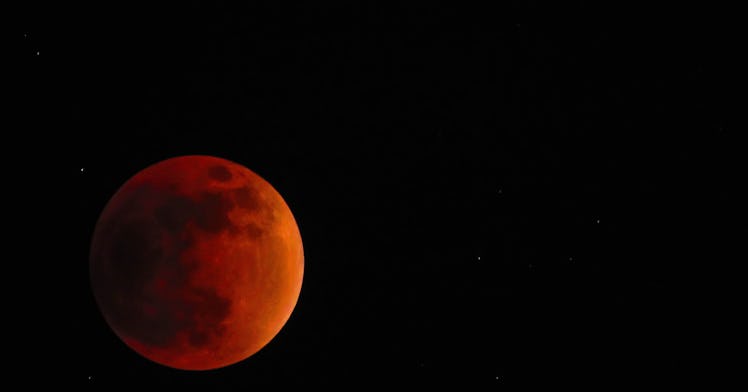Interactive Chart Shows Exactly When The Total Lunar Supermoon Eclipse is Happening Where You Live
After November, the next Lunar Eclipse won't be seen until 2025.

For families who love to watch the wonders up in the sky — from full moons to meteor showers — there’s a good show this month that culminates in a total lunar eclipse. You’ll want to mark your calendars for May 15 and make sure you have all the details for when and where you can see May’s Total Lunar Eclipse (taking place during a full moon super moon called the Flower Moon — seriously! there’s so much happening!) that’s just a few days away. Thankfully there’s an interactive chart that has everything you need to know on exactly when to catch May’s total lunar eclipse where you live.
Time and Date wants to make sure we don’t miss out on the incredible Total Lunar Supermoon Eclipse, so it’s created an interactive chart that simulates the moon phases on May 15-16. But it’s super specific in that you can add in where you live, and it will adjust the times and phases based on that to show exactly when you should step outside in the wee hours of the 15th to catch the lunar eclipse. That means you’re not going to miss a thing if you check the chart and write the details down.
- For example, if you live in Brooklyn, New York, the Time and Date chart shows that the eclipse process will begin at 9:32 p.m. on May 15. From there it moves through the stages, reaching max eclipse at 12:11 a.m. local time.
- If you live in Nashville, Tennessee, the eclipse process begins at 8:32 p.m. local time and will reach max eclipse at 11:53 p.m. local time.
- For anyone living in Juneau, Alaska, unfortunately, you won’t be able to see the eclipse this time around since it will be below the horizon.
- People who live in Vancouver, British Columbia in Canada, you won’t get to see the full show while the moon is still rising. However, catching the maximum eclipse can be seen at 9:11 p.m. but it will be over at 9:53 p.m.
As a reminder, Lunar eclipses are safe to look at with the unaided eye, and you likely won’t need to have any binoculars or telescopes to get a good look at this one – unless you live in an area where it’s not going to be visible.
But checking the chart will make sure you don’t miss any of it – and you won’t want to miss it because the next full lunar eclipse won’t come until November and the time following that won’t be until 2025.
If you can’t see the Lunar Eclipse this month, it’s worth noting it culminates alongside the Full Flower Moon. The moon that celebrates the flowers blooming will reach its peak illumination at 12:15 A.M. EST on Monday, May 16. For anyone who lives in west coast time zones, the moon will hit peak illumination in the evening of Sunday, May 15, and it will be a super moon.
Lots happening, which is always fun. The next Full Moon – June’s Strawberry Moon – is just around the corner, too. You can check out the full interactive chart tool here.